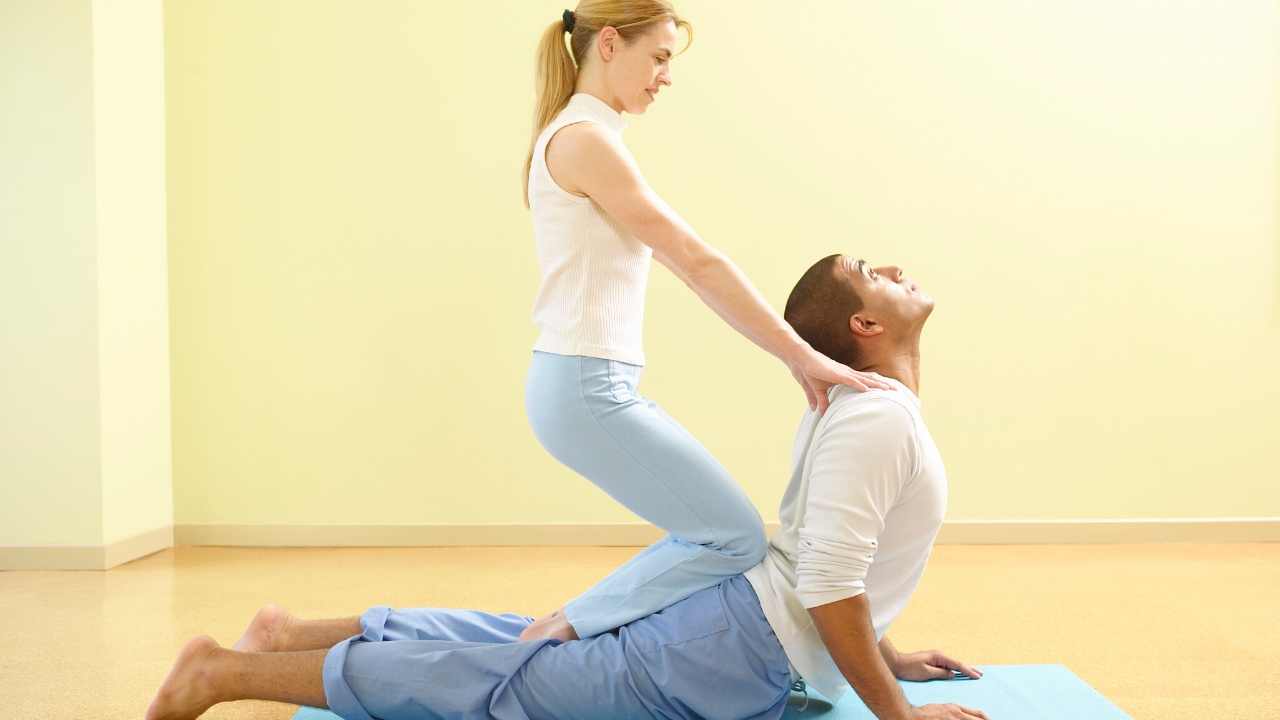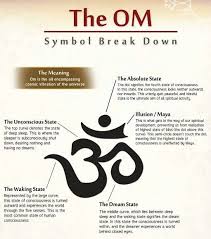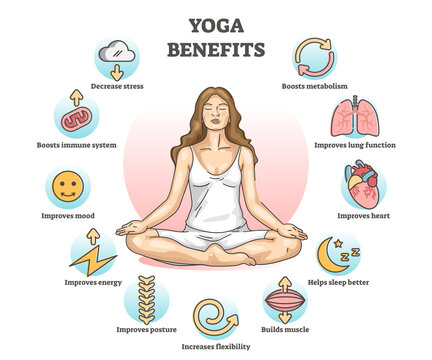
Yoga tree pose can be challenging but extremely beneficial. It's a balancing asana that's popular in many styles of yoga. It originated as one of the few standing poses of medieval hatha yoga and remains popular in modern yoga practice. It has a variety of health benefits that range from improved balance to greater strength and flexibility.
Tadasana
Tadasana, or yoga tree pose, is a powerful stretch that will benefit your entire body, from feet to head. Tadasana should be held for 10 rounds. Keep your eyes straight and keep your body still. It will also help to stretch your chest and spine. Tadasana can also be used to reduce stress and create mental balance. You can even increase your height with Tadasana!

Tadasana aids in digestion. This is because the core muscles help to keep the body balanced. It can reduce the severity of Parkinson's and ankylosing spinelitis. Tadasana is a great way to strengthen your legs and improve balance.
Seated tree pose
Practicing Tree Pose seated is a great way to explore different aspects of the posture without the need for balance. The seated version of Tree Pose allows the practitioner the opportunity to explore the dynamic tension that exists between grounding, lifting, and vice versa. It helps to strengthen the support leg muscles by pressing your foot into the ground.
The seated version is easier than the standing version. To begin the pose, raise your left hand off the ground and sit straight up. Next, align the right foot with the left thigh. Your pelvis should remain straight. When you feel confident in your ability to lift your right heel, align the left thigh with the right and continue this movement. Hold for three to ten breaths, then reverse the movement. Once you're done, lift up your arms and place them directly in front to your heart center.
Inversion of tree pose
Tree pose is one basic position in yoga. It is a good way to develop strength and patience. It gives the practitioner subtle reminders about posture while providing insight into their mental state. When done properly, this posture can be quite challenging, but it is an excellent exercise to explore the inner state. This pose is particularly useful for beginners. There are many resources available that can help beginners get started with this position. Matt Giordano has written detailed instructions with modifications for both beginners and more experienced yogis.

This inversion lasts for either a few or a long time. The duration can be increased gradually with practice. Beginners should hold the pose for only a few seconds. Regular yogis can increase the duration slowly. To lift the right foot first, raise your right leg. The left leg should be counterbalanced by the lead leg. Balasana or Savasana should be completed at the end of an inversion. Sometimes, the yogi will also perform a counterpose before returning to the original pose.
FAQ
What are the benefits to yoga for beginners?
Yoga improves your flexibility, strength, posture, breathing control and mental clarity. Yoga can help you become more aware of your surroundings, yourself and others.
Yoga teaches you to live fully. You learn to listen to your body and mind. Accept yourself for who you are. It is possible to let go tension and stress.
You learn how to relax and live your best life.
How does yoga change your body?
Yoga helps you to relax and stretch. It makes you feel great. This is because yoga increases flexibility, strength and decreases stress. This will result in improved sleep, concentration, and energy.
Yoga can also increase blood flow, which will make you less susceptible to getting the flu. Because yoga encourages deep breathing, oxygen to your brain is increased.
Yoga is a great way to relieve tension and pain. The postures are good for strengthening muscles and joints.
For your happiness and health, it is important to practice yoga regularly.
Who would get the greatest benefit from yoga?
The target market for yoga is people who want a better quality of life by improving their health and fitness levels. People who want to improve their flexibility, balance, and posture.
In addition, they may also want to lose weight or gain muscle mass. They might be interested in reducing stress, anxiety, or achieving peace of thought.
Asthma, diabetes, arthritis, back problems and asthma are all possible disabilities. Yoga is especially helpful for those with disabilities.
What foods should be avoided after practicing yoga
Some foods may cause you to lose energy. It may also cause you to feel bloated or have stomach cramps. You may feel tired after practice.
What happens if I stop doing yoga?
After a while, it's normal for people to lose interest in a particular activity. Yoga may cause stiffness in your body if you stop regularly practicing it. Poor posture, lack of exercise and aging can all contribute to stiffness.
If you find it less flexible over time, consider retaking a few classes. Make sure to keep up with your daily routine. Exercise can help strengthen your bones.
Is yoga safe enough for everyone?
Yoga is safe for all ages, genders, ethnicities, and abilities. Yoga has been widely practiced for thousands without side effects.
However, if you have certain medical conditions, please check with your doctor before starting a new exercise program.
Statistics
- Start your Fall off right with 20% off All Access Membership when you sign up by 9/25! (corepoweryoga.com)
- The American Psychological Association recently shared that 84% of American adults feel the impact of prolonged stress (5). (healthline.com)
- A 2020 review of 27 studies (1,805 total participants) of yoga interventions in children or adolescents found reductions in anxiety or depression in 70 percent of the studies, with more promising results for anxiety. (nccih.nih.gov)
- According to calorie estimates calculated at Harvard Medical School, the average 125-pound person burns about 120 calories in a half hour of hatha yoga, and a 185-pound person burns about 178 calories in that half hour. (everydayhealth.com)
- Lock in 25% off your Founding Member rate. (corepoweryoga.com)
External Links
How To
Is yoga a good workout?
Yoga isn’t just for those who want to lose weight. Yoga is not just for those who want to lose weight. It helps them develop flexibility and balance.
Yoga isn't just exercise, but an art form. They are used to relax and meditate. They improve posture, concentration, and respiration.
Yoga is practiced by yogis. Yogis follow various forms of yoga, including Hatha, Ashtanga, Iyengar, Vinyasa, Bikram, Kundalini, Yin Yang, and Restorative.
There are many different types of yoga. They all have the same goals. Each type focuses on different aspects of health and wellness. Yoga styles include Hatha, pranayama (meditation), and pranayama (pranayama).
These yoga moves don't require any equipment
-
Sun Salutation: This series of 12 postures begins with a forward bent, and then 10 additional poses.
-
Warrior pose - This is when you hold a stick or a staff and take a warrior's pose.
-
Triangle Pose - This pose involves lifting one leg behind you and bending at the knee.
-
Standing Forward Bend - This pose is performed by sitting on the floor with legs straight and then folding forward at the waist.
-
Seated Twist - This pose is performed while seated on a chair or mat.
-
Cobra Pose: This position is done lying on your back, arms raised.
-
Child's pose - This is when you are lying on your back, face up.
-
Cat/Cow Pose: This combination of a cow and cat pose is called the Cat/Cow Pose. Your upper body should be lifted off the ground while you are lying down. Now roll to your side, and then place your hands below your shoulders.
-
Head Tilt--This pose requires that you tilt your head back with your eyes closed.
-
Shoulder stand - This position involves standing straight up with your arms and feet raised above the head.
-
Tree Pose- You can achieve this pose by kneeling on one knee with your hands under you shoulders.
-
Bow Pose: This pose requires you to bend forward from the hips, and then place your palms on ground.
-
The corpse pose is held for five to ten minutes.
-
Mountain Pose- You can call this mountain pose because your spine is straight up and you are tall.
-
Legs up the wall Pose - This is a pose where you hang upside-down from a brick wall.
-
Side Angle Pose – This is achieved by leaning against the wall and placing your right arm near the wall.
-
Plank Position- When you lie on your stomach and extend your left hand and right foot apart, you can achieve this position.
-
Bridge Pose – Balance on your elbows while balancing on the toes in this pose.
-
Reverse Table Top Pose - This pose is attained by lying on your tummy and reaching your arms toward the ceiling.
-
Handstand - This pose requires balance and strength. You can hold your body between two walls or a frame of a door to perform this pose.
-
Half Moon Pose- Also known as Hero Pose. It involves standing on your hands with your toes.
-
Headstand (or Handstand) - This pose requires excellent balance and strength. This pose is possible on a brick wall or on a doorframe.
-
Forearm Balance- This position is done with your forearms on a tabletop.
-
Spinal Twist - This pose lies on your belly while reaching your arms.
-
Supported Boundangle Pose – This pose requires balance. You will need to find a sturdy object like a tree branch or an old beam to lean on.
-
Wide Leg Forward - This position involves extending your legs and touching your toes.
-
Single Pigeon Pose -- This pose is similar in style to the forward fold with one leg, but it only involves one leg.
-
Extended Puppy Dog Pose: This is a very relaxing pose. This can be done by stretching your legs straight out and bending at the knees.
-
Sitting Forward Bend - This position involves sitting cross-legged and stretching the hamstrings.
-
Crow Pose - Although this pose is hard to do, it can be extremely rewarding once mastered. You do this by raising your arms high above your head and lowering them to the floor.